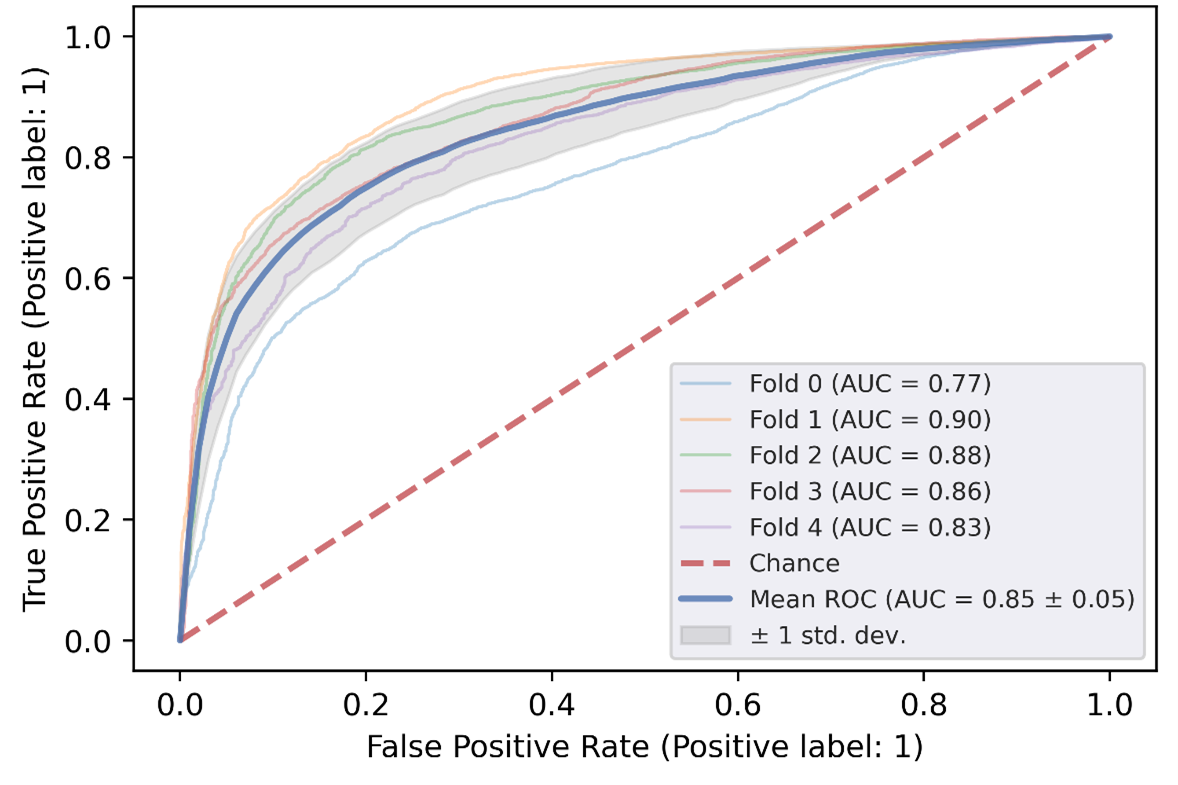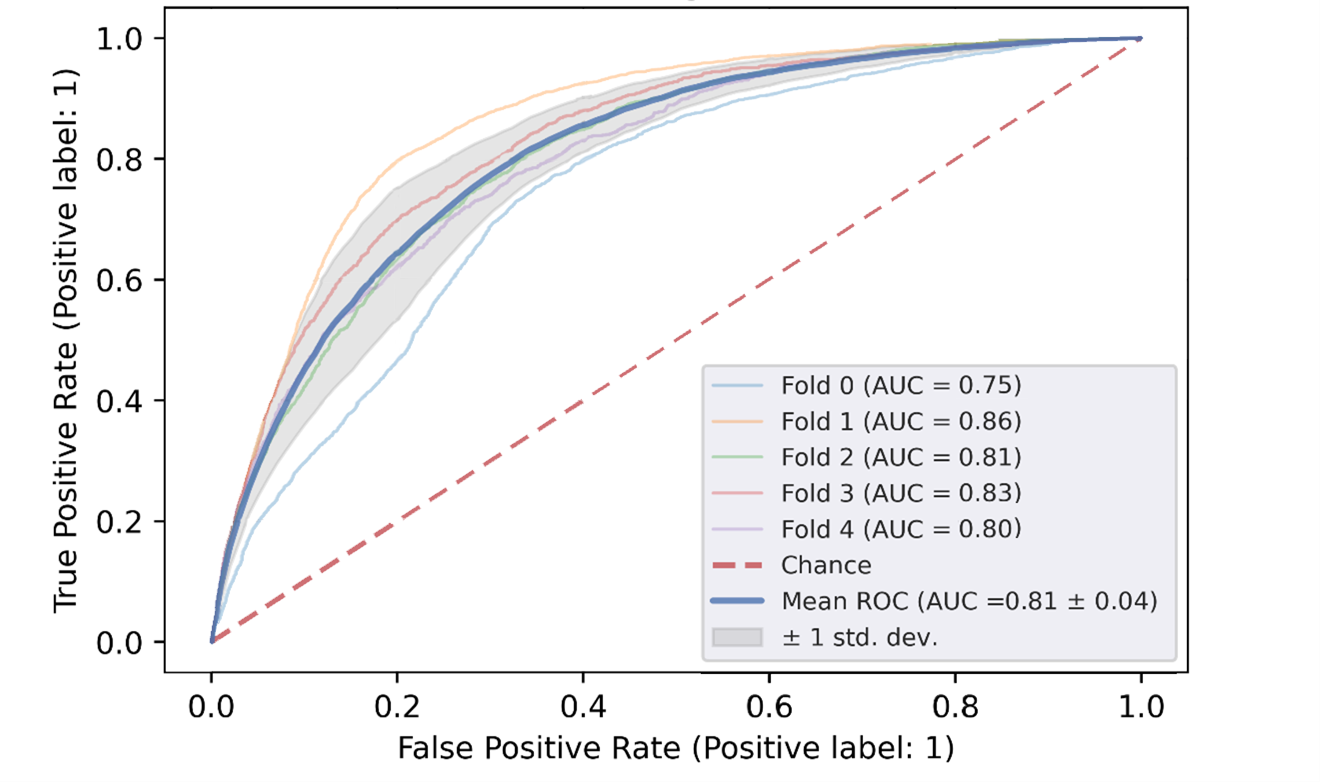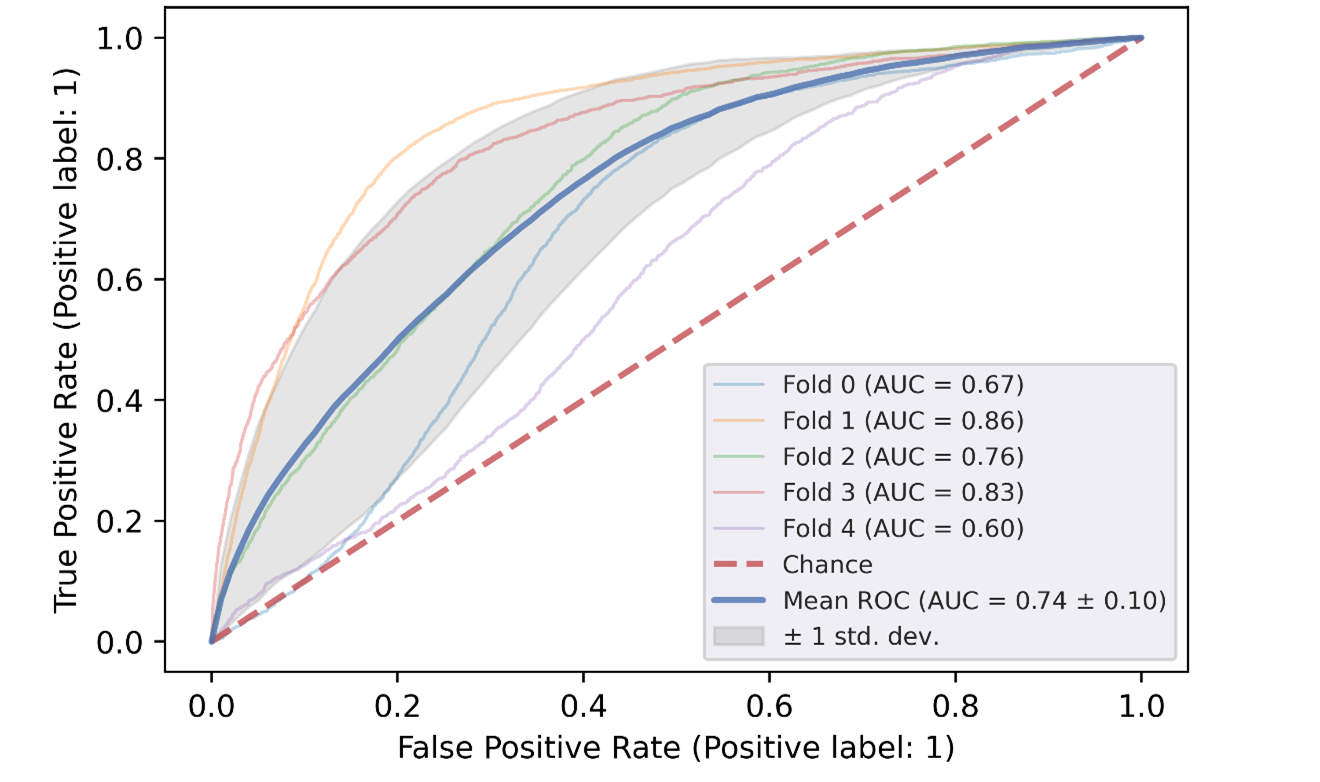Category: Technology
Objective: To detect freezing of gait (FOG) in people with Parksinson’s disease using three novel deep learning approaches.
Background: FOG is one of the most debilitating symptoms experienced by patients with Parkinson’s disease and the most common cause of falls [1]. External cues, consisting of rhythmic, temporal or spatial stimuli can help to overcome FOG [2, 3]. In order to enhance the user experience of cueing devices and to diminish intrusiveness and habituation to cues, on-demand cueing is desired. In addition, objective FOG detection enables monitoring and objective assessment of therapy [4]. A convolutional neural network (CNN) is often used to detect FOG in IMU data [5]. More complex networks could result in a higher accuracy for time series data as suggested by a recent review [6]; the MiniRocket [7] and InceptionTime [8]. We evaluated the performance on the detection of FOG of three deep learning classifiers based on acceleration data.
Method: Acceleration data from four studies [9–12] with walking tasks ranging from straight walking, turning and a narrow pathway was combined. The data was windowed (2 seconds) and was split between a train- and a hold out test set. All experiments were video annotated, providing a label for FOG. We implemented a CNN, MiniRocket and InceptionTime model to detect FOG. Five fold cross-validation was applied. The models were evaluated using a receiver operating characteristic (ROC) curve and it’s area under the curve (AUC). For the best model we made a comparison between different sensor combinations of acceleration data from the upper legs, lower legs and feet. The best model in combination with the best sensor selection was evaluated on the hold out set.
Results: Seventy-one participants were included in this study, which resulted in 172000 samples of data of which 8% was labelled as FOG. The mean AUC-ROC was 0.85 for the CNN, 0.81 for InceptionTime and 0.74 for the MiniRocket, as seen in Figure 1-3. The highest AUC-ROC was reached when the best model, namely the CNN, was trained on the acceleration data of the lower legs and feet. This resulted in an AUC-ROC of 0.72, with a sensitivity of 74.8% and specificity of 60.8% on the test set.
Conclusion: The classification algorithms display great potential for objective FOG detection, with a CNN as the best performing model in this study.
References: 1. Armstrong MJ, Okun MS (2020) Diagnosis and Treatment of Parkinson Disease. JAMA 323:548. https://doi.org/10.1001/jama.2019.22360
2. Ginis P, Nackaerts E, Nieuwboer A, Heremans E (2018) Cueing for people with Parkinson’s disease with freezing of gait: A narrative review of the state-of-the-art and novel perspectives. Ann Phys Rehabil Med
3. Nieuwboer A, Kwakkel G, Rochester L, et al (2007) Cueing training in the home improves gait-related mobility in Parkinson’s disease: the RESCUE trial. J Neurol Neurosurg Psychiatry 78:134–140. https://doi.org/10.1136/jnnp.200X.097923
4. Lewis S, Factor S, Giladi N, et al (2022) Stepping up to meet the challenge of freezing of gait in Parkinson’s disease. Transl Neurodegener 11:23. https://doi.org/10.1186/s40035-022-00298-x
5. Pardoel, Kofman, Nantel, Lemaire (2019) Wearable-Sensor-based Detection and Prediction of Freezing of Gait in Parkinson’s Disease: A Review. Sensors 19:5141. https://doi.org/10.3390/s19235141
6. Ruiz AP, Flynn M, Large J, et al (2021) The great multivariate time series classification bake off: a review and experimental evaluation of recent algorithmic advances. Data Min Knowl Discov 35:401–449. https://doi.org/10.1007/s10618-020-00727-3
7. Dempster A, Schmidt DF, Webb GI (2021) MiniRocket. In: Proceedings of the 27th ACM SIGKDD Conference on Knowledge Discovery & Data Mining. ACM, New York, NY, USA, pp 248–257
8. Ismail Fawaz H, Lucas B, Forestier G, et al (2020) InceptionTime: Finding AlexNet for time series classification. Data Min Knowl Discov 34:1936–1962. https://doi.org/10.1007/s10618-020-00710-y
9. Janssen S, Bolte B, Nonnekes J, et al (2017) Usability of Three-dimensional Augmented Visual Cues Delivered by Smart Glasses on (Freezing of) Gait in Parkinson’s Disease. Front Neurol 8:. https://doi.org/10.3389/fneur.2017.00279
10. Janssen S, de Ruyter van Steveninck J, Salim HS, et al (2020) The Effects of Augmented Reality Visual Cues on Turning in Place in Parkinson’s Disease Patients With Freezing of Gait. Front Neurol 11:. https://doi.org/10.3389/fneur.2020.00185
11. Janssen S, Heijs JJA, van der Meijs W, et al (2019) Validation of the Auditory Stroop Task to increase cognitive load in walking tasks in healthy elderly and persons with Parkinson’s disease. PLoS One 14:e0220735. https://doi.org/10.1371/journal.pone.0220735
12. Klaver EC, van Vugt JPP, Bloem BR, et al (2023) Good vibrations: tactile cueing for freezing of gait in Parkinson’s disease [Accepted for publication]. J Neurol
To cite this abstract in AMA style:
EC. Klaver, IB. Heijink, G. Silvestri, JPP. van Vugt, J. Nonnekes, RJA. van Wezel, MC. Tjepkema-Cloostermans. Detection of freezing of gait in people with Parkinson’s disease using novel deep learning approaches. [abstract]. Mov Disord. 2023; 38 (suppl 1). https://www.mdsabstracts.org/abstract/detection-of-freezing-of-gait-in-people-with-parkinsons-disease-using-novel-deep-learning-approaches/. Accessed March 30, 2025.« Back to 2023 International Congress
MDS Abstracts - https://www.mdsabstracts.org/abstract/detection-of-freezing-of-gait-in-people-with-parkinsons-disease-using-novel-deep-learning-approaches/



